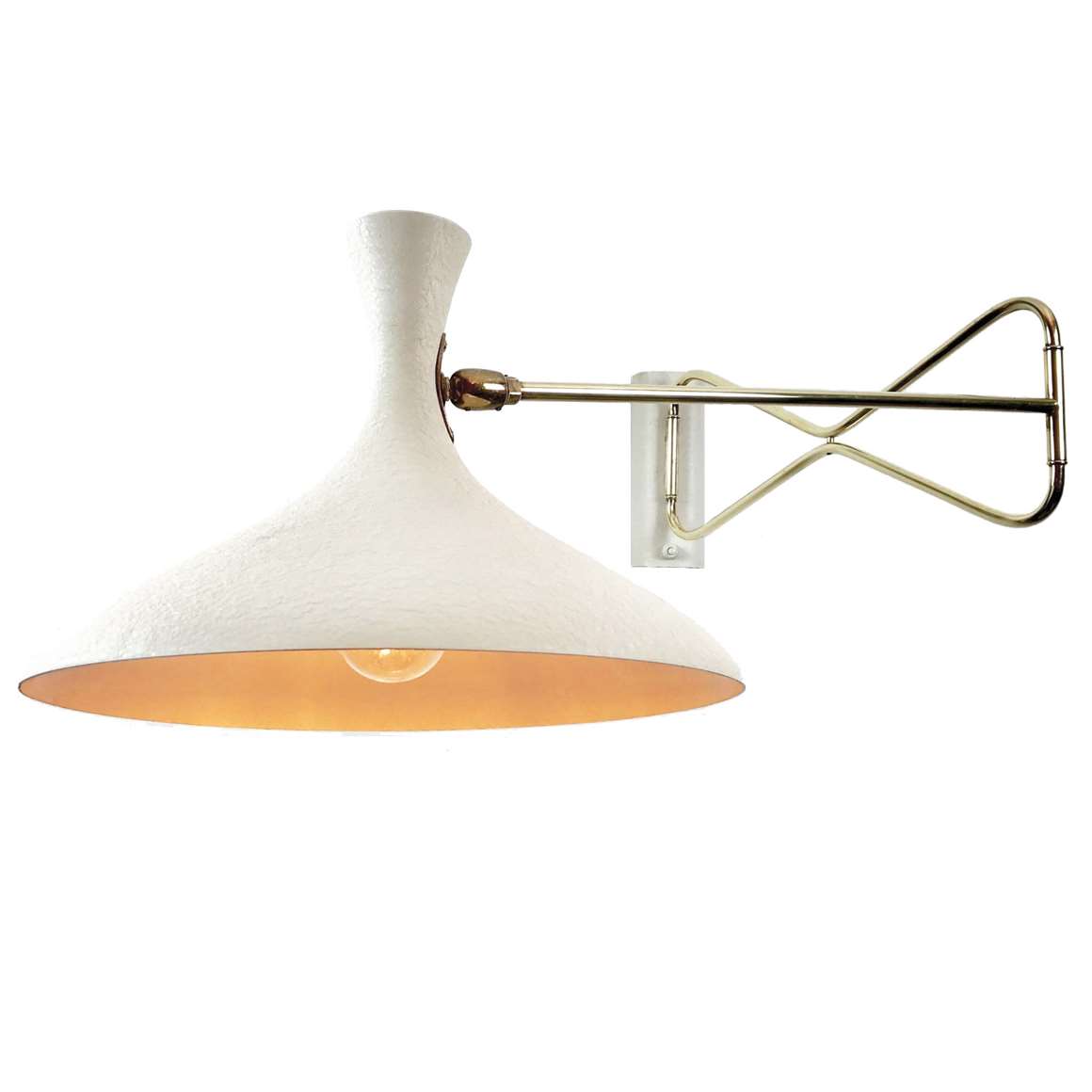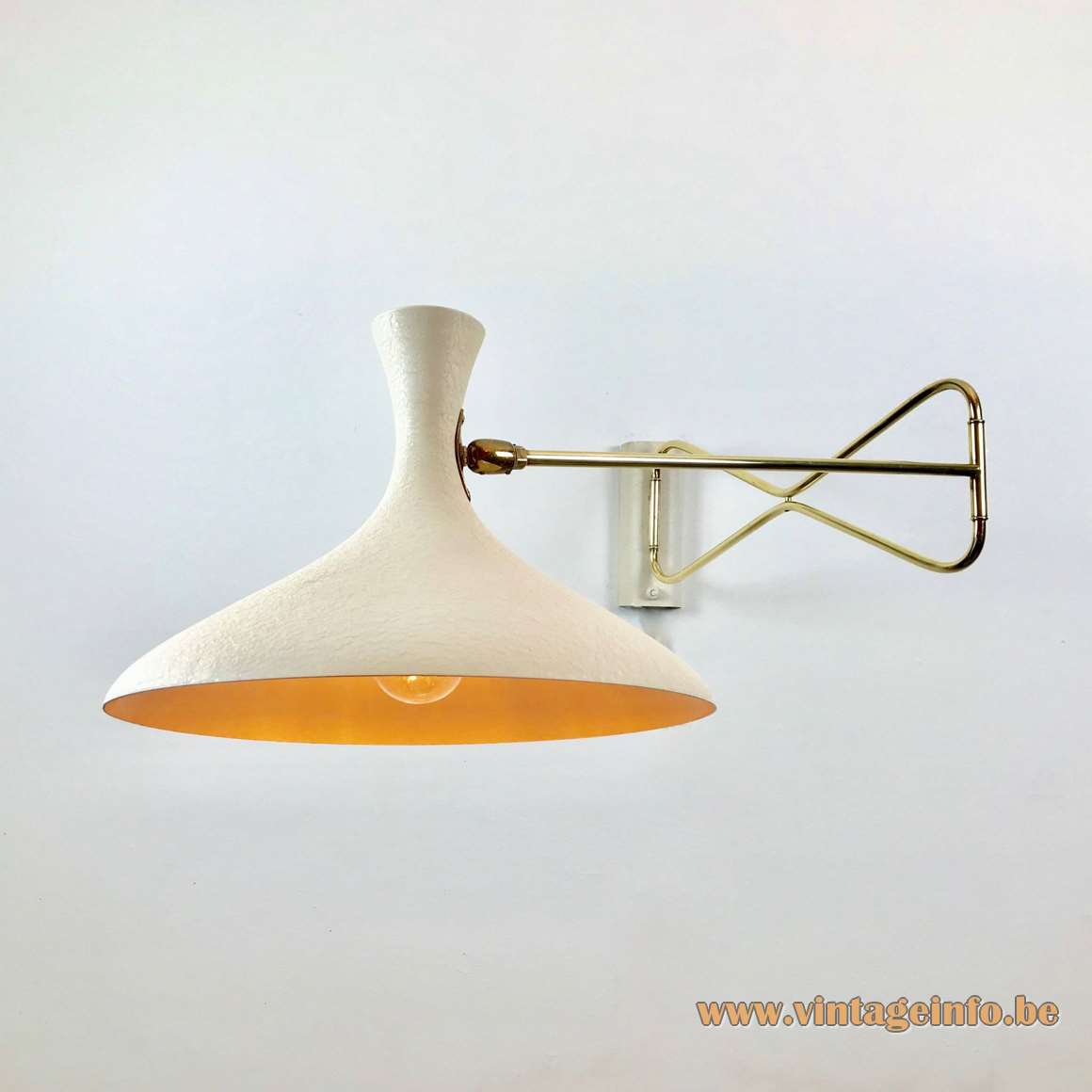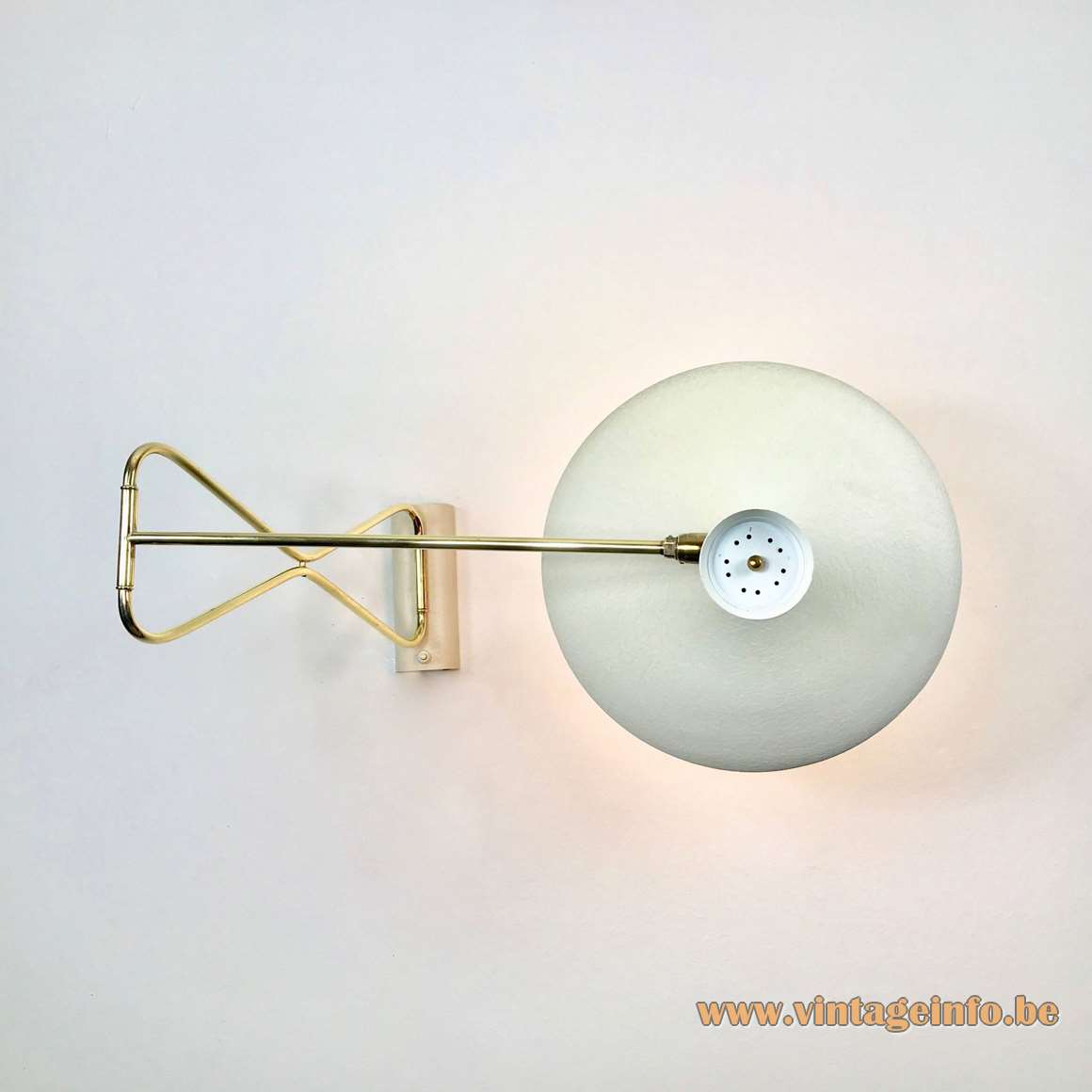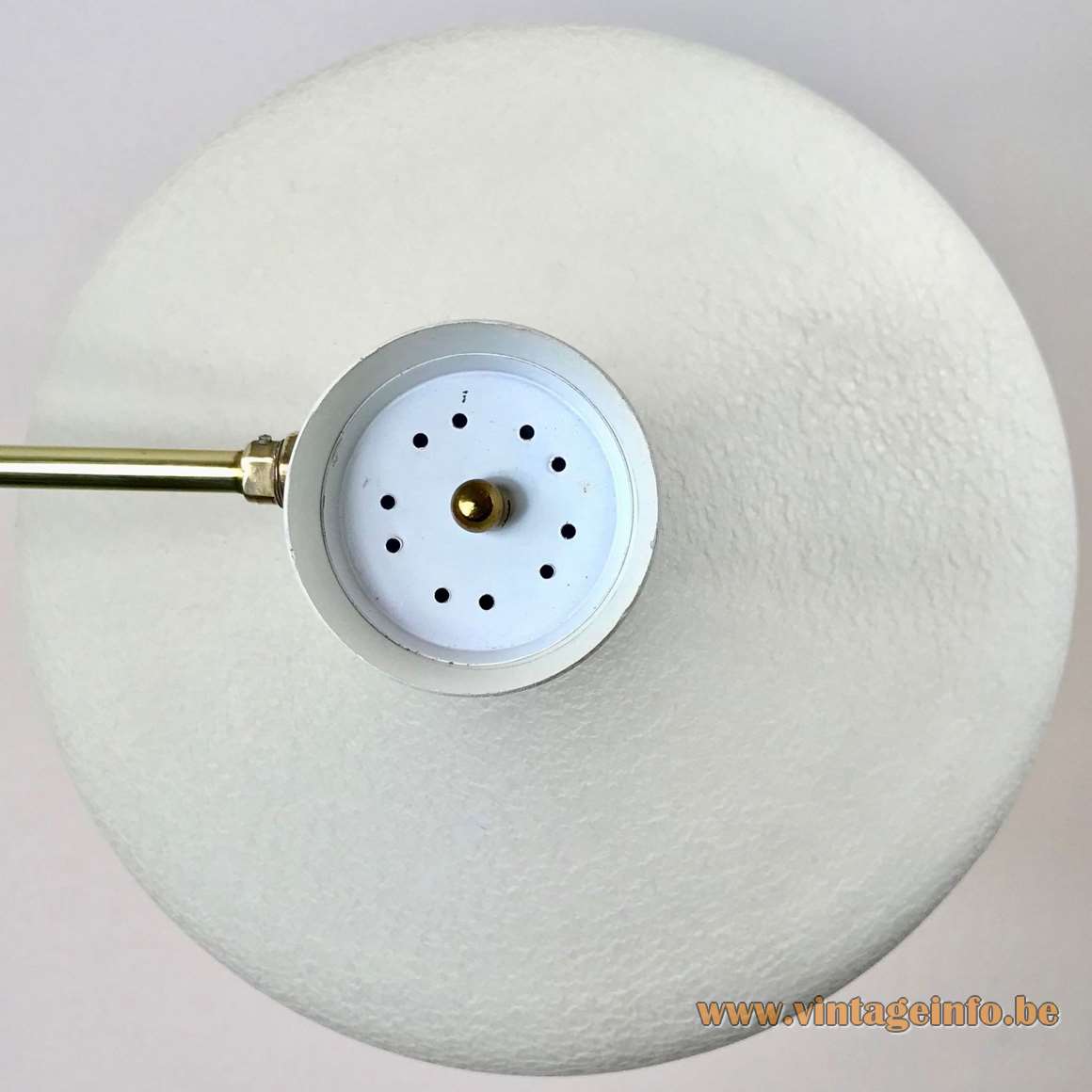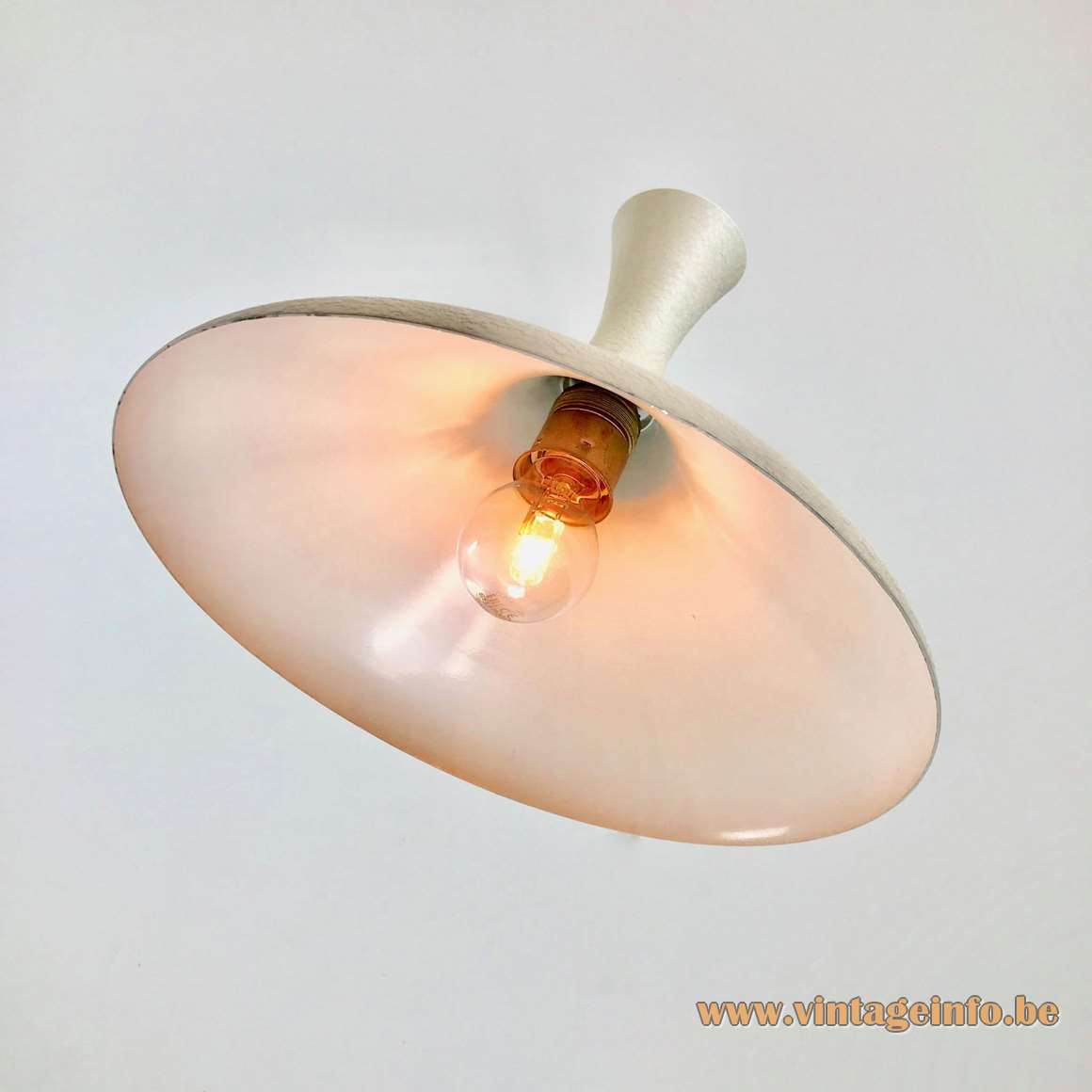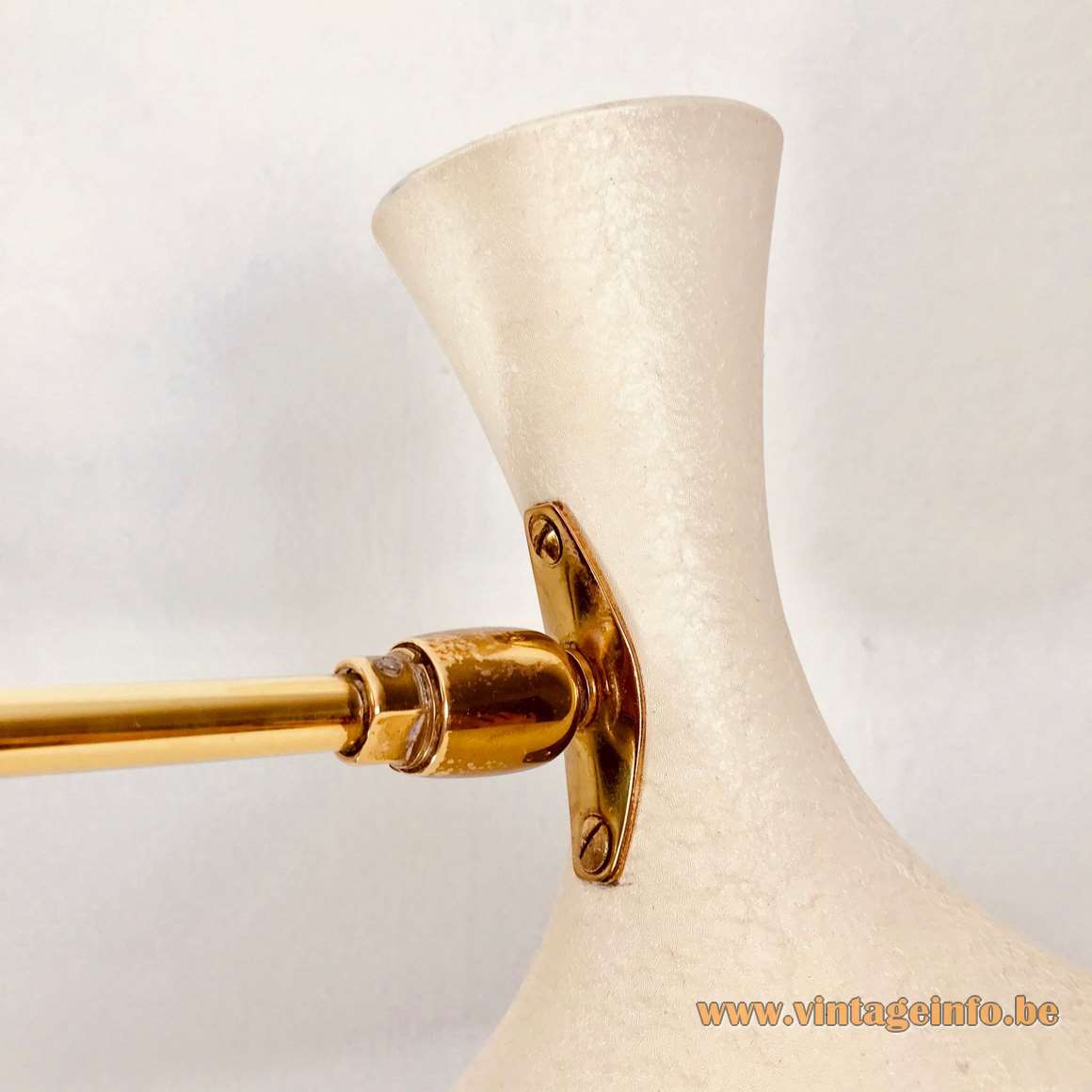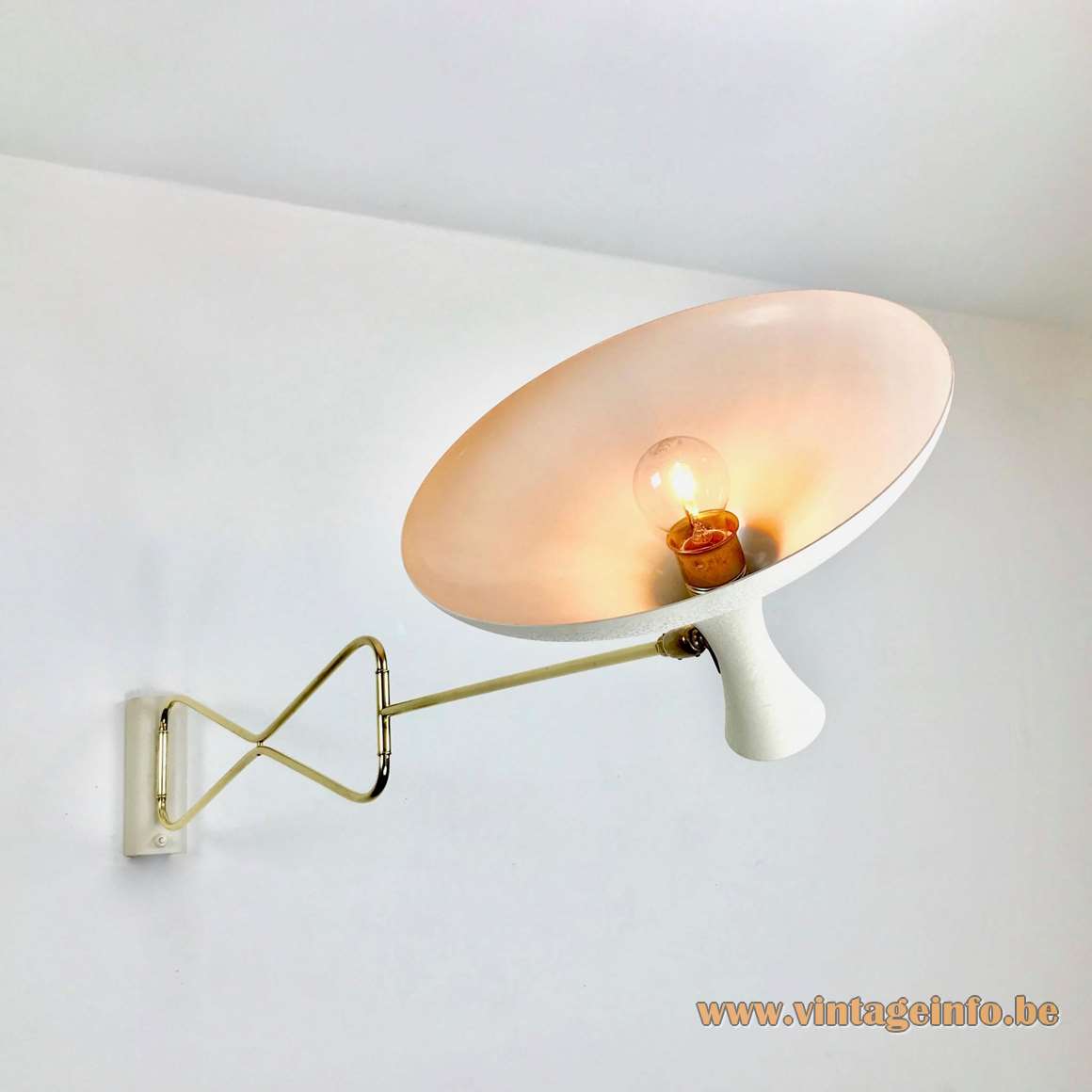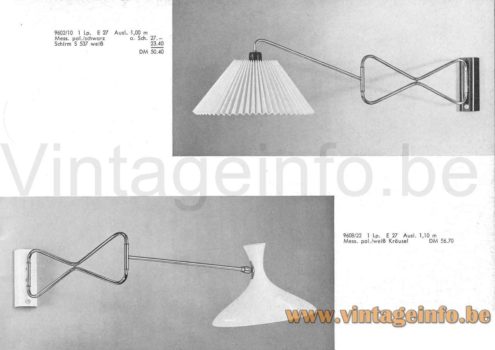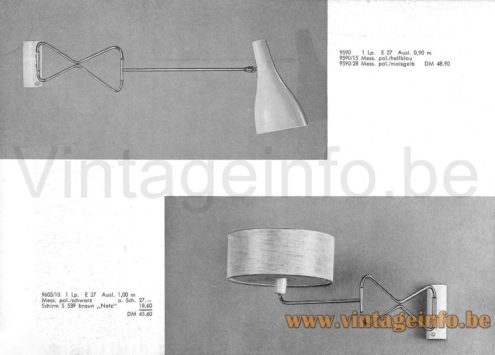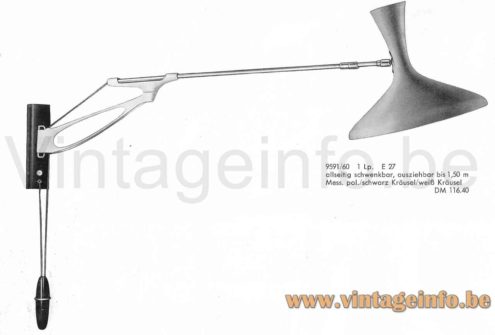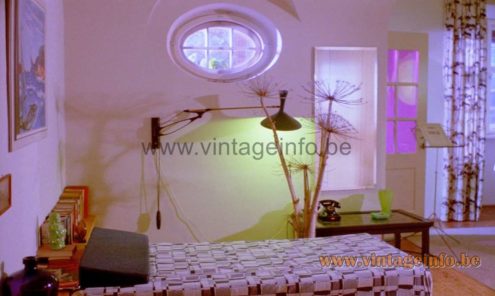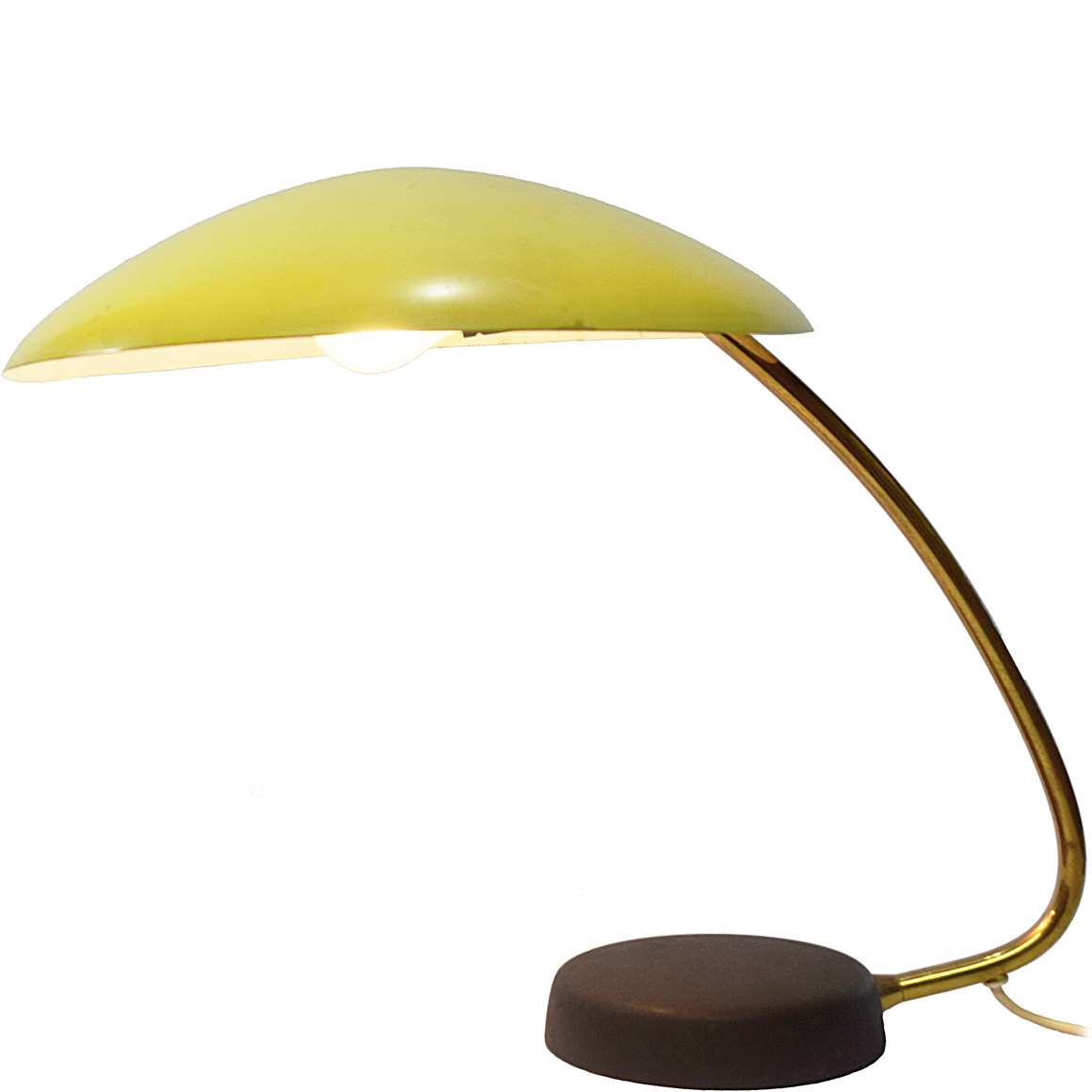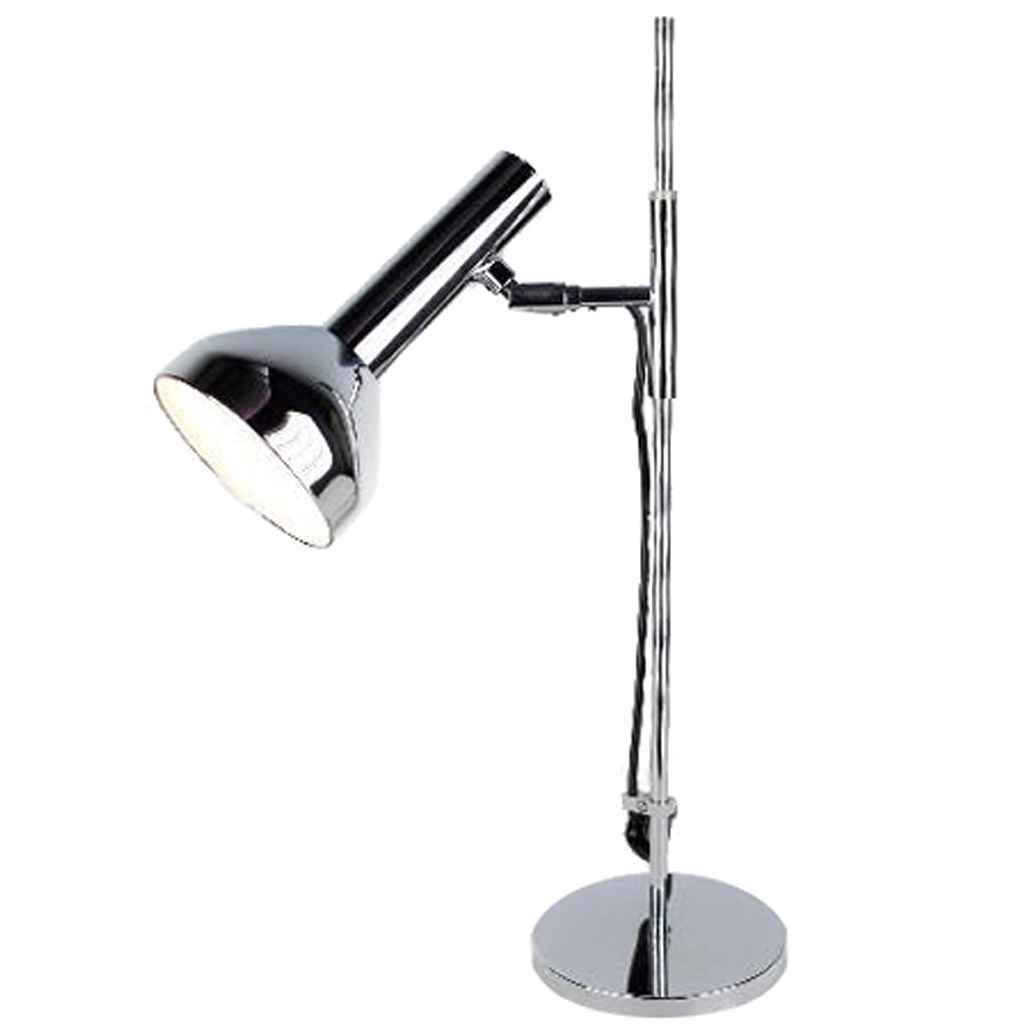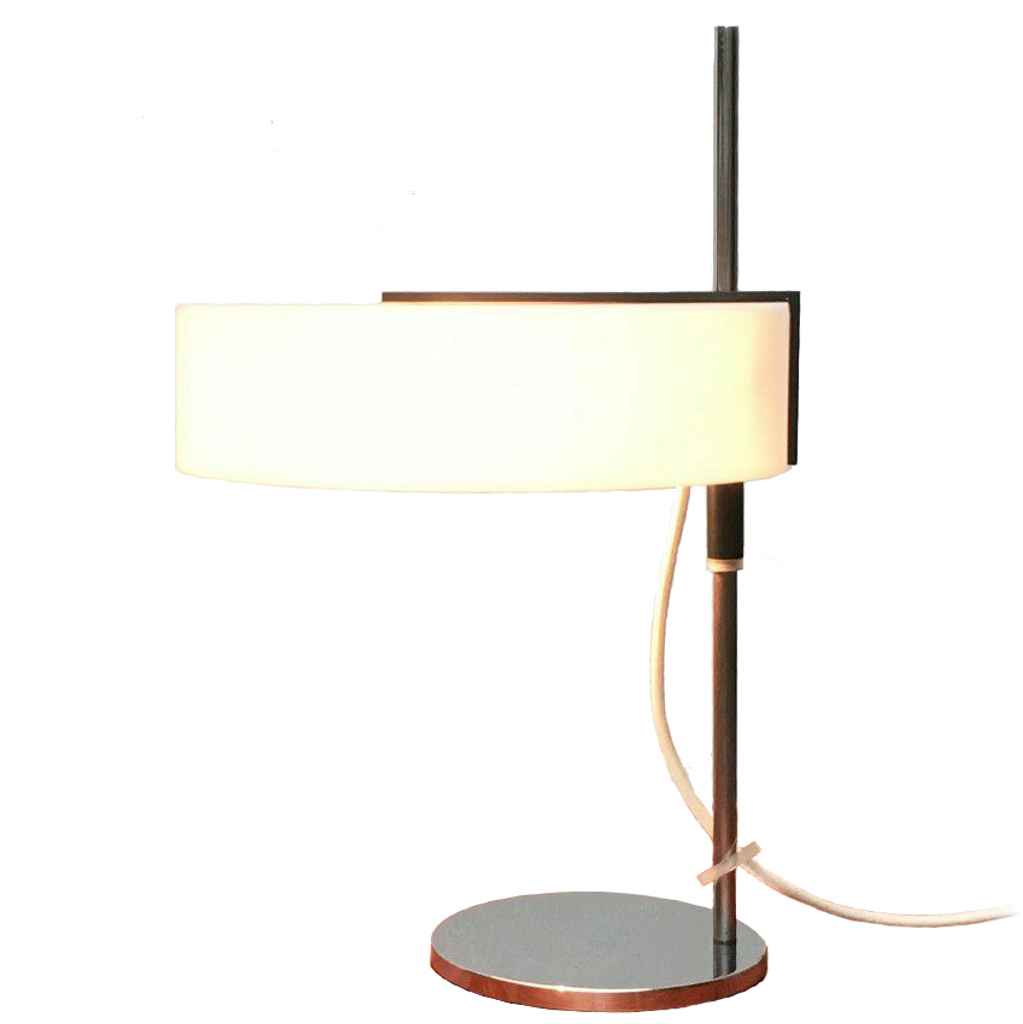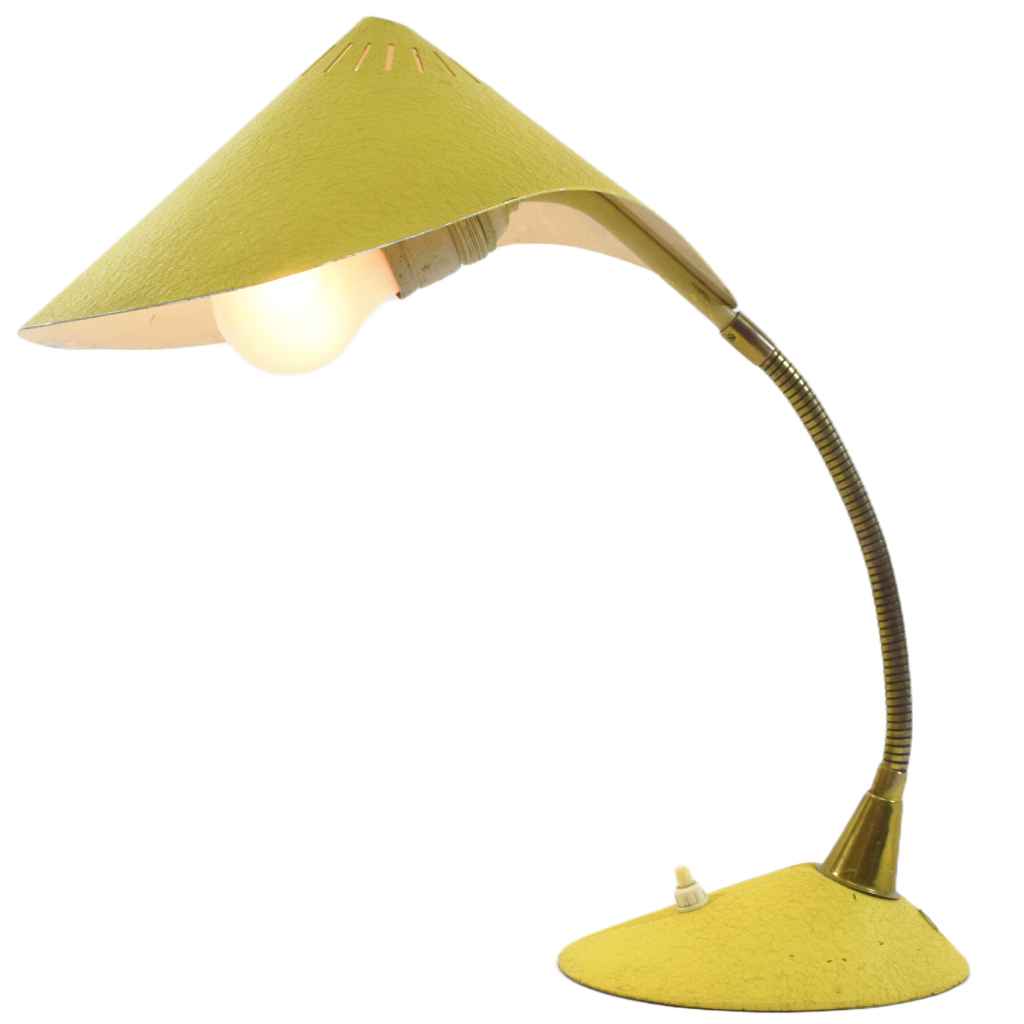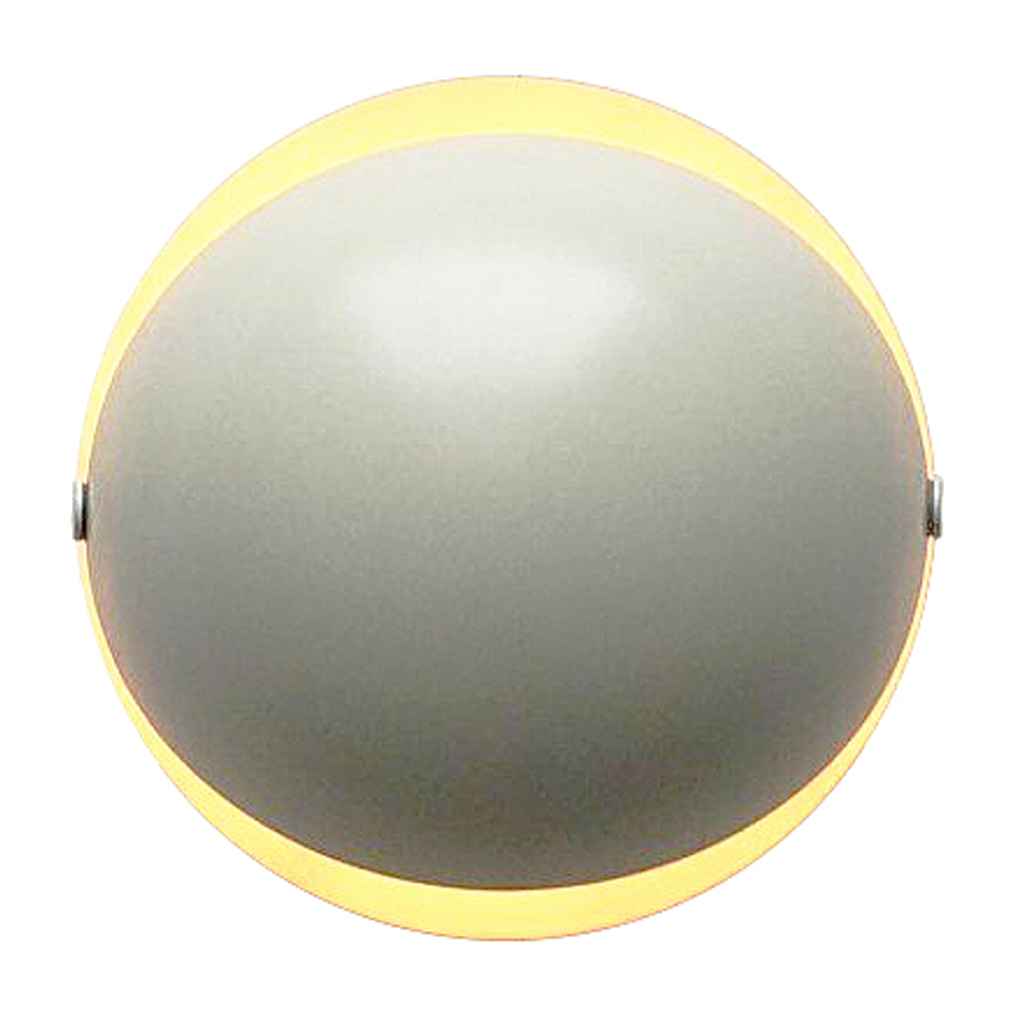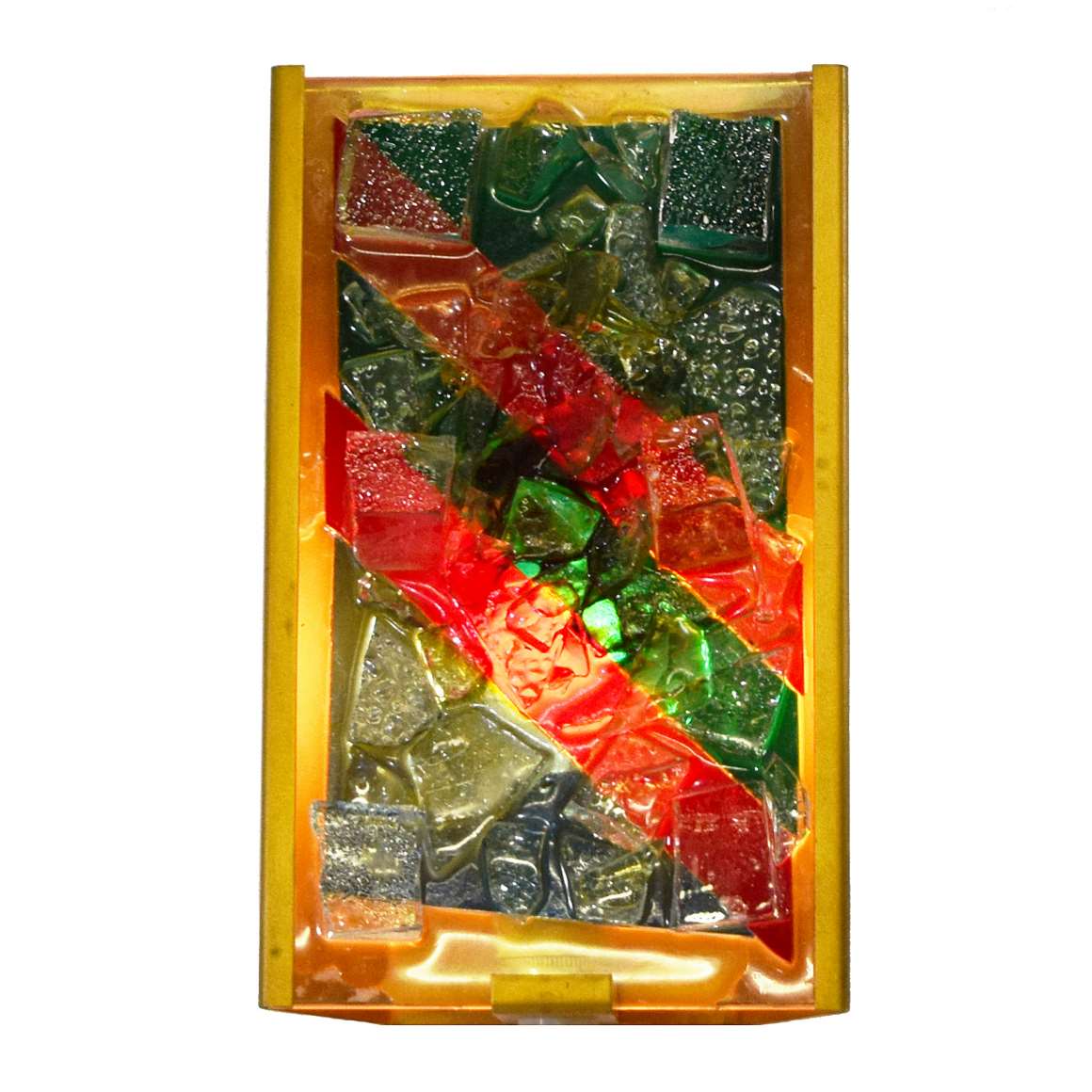Cosack Swing-Arm Diabolo Wall Lamp – 1959 Catalogue Pictures
Cosack Models 9602, 9608
Cosack Models 9590, 9603
Cosack Model 9591
Many thanks to Hans from Objeta for the beautiful pictures.
Many thanks to Max from AfterMidnight for the catalogue picture.
Cosack Swing-Arm Diabolo Wall Lamp
Materials: Articulating brass rods. Off-white/beige painted diabolo lampshade, painted with wrinkle-paint. Painted white inside. Some metal parts. Metal E27 socket.
Arm: 100 cm / 39.37”
Height: 28 cm / 11.02”
Width: ∅ 31 cm / 12.20”
Electricity: 1 bulb E27, 1 x 75 watt maximum, 110/220 volt.
Any type of light bulb can be used, not a specific one preferred.
Period: 1950s, 1960s – Mid-Century Modern.
Designer: Karl-Heinz Kinsky.
Manufacturer: Gebrüder Cosack – Gecos, Neheim-Hüsten, Germany.
Other versions: This Cosack swing-arm diabolo wall lamp exists in several colours. A version with a different arm was also made, as you can see below and in the photo of the German film Lola from 1981. The lampshade was also used for a pendant lamp and a table lamp. The swing arm was used with several other lampshades, as you can see in the 1959 catalogue pictures.
Often attributed to Louis Kalff, but those are false assumptions. Louis Kalff designed lamps for Philips, the company he worked for all his life. He never designed lamps for Cosack.
Cosack Leuchten
The GebrüderCosack (Gecos) company was founded in 1848 as a metal processing plant in Neheim-Hüsten, Germany by Egon, Friedrich and Theodor Cosack together with Gottliebe Tappe. It was named Metallwarenfabrik Tapp + Cosack. In the beginning they made liturgical items, crosses and upholstery nails made of brass and they also produced kerosene lamps. Later the company came to the production of electric lamps.
After the Second World War Cosack pursued a modern direction. A best seller were copper lighting for restaurants. It is said that the company was declared bankrupt in 1984, but the last catalogue I have (1989 -1990) was published in 1989.
Best known designers: Gottfried Stürzenhofecker, K. H. Kinsky, Hans Wilfried Hegger, Hans-Joachim Groth, Burkhard Panteleit, Joachim O. Becker, Prof. Friedrich Becker, Waldemar Rothe and Jan Armgardt.
Gebrüder Cosack (Gecos) received 15 iF Design Awards.
Diabolo
Diabolo is the name given to the shape of the lampshade. The diabolo lampshades were very popular in the 1950s. You can find several examples on Vintageinfo.
The diabolo, some yo-yo, has its origin in China. It’s a double-coned bobbin that can be twirled, tossed, and caught on a string secured by two sticks, one held in each hand. The first diabolo’s were made of bamboo and they made some whistling sound.
In the eighteenth century, the diabolo became known in England and France. The term “diabolo” was made up by French engineer Gustave Phillippart, who developed the modern diabolo in the early twentieth century and he was re-released. Since then, he has been widespread.
Lamps In The Movies
Lola (1981) Film
A model 9591Cosack swing-arm diabolo wall lamp was used as a set decoration in the 1981 West-German film Lola. The film is set in 1957. Lola was d irected by Rainer Werner Fassbinder. Starring Barbara Sukowa, Mario Adorf and Armin Mueller-Stahl.
Links (external links open in a new window)
If Design Awards for Gebrüder Cosack
Vintageinfo
Glass globe table lamp model 7974
